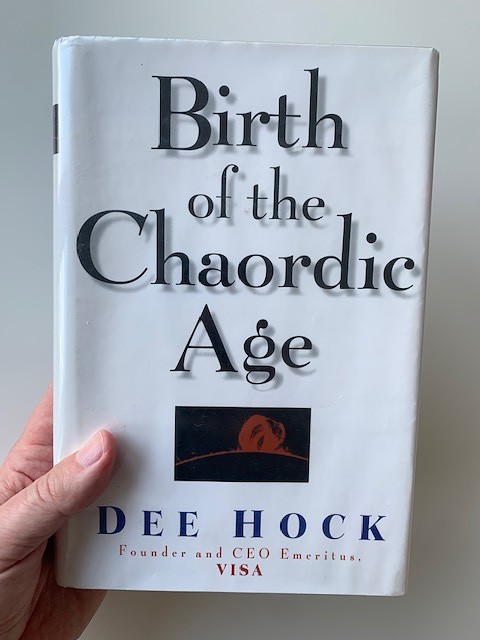
Birth of the Chaordic Age by Dee Hock is one of my favorite books. The Prologue: On the Nature and Creation of Charodic organizations is particularly interesting. A reprint with permission can be found here.
Chaordic organizing is about releasing what people desire in the depth of their being, the passion they have for it, and the integrity they bring to the attempt.1 It requires a radical rethink of organizational purpose and organizing principles.
Hierarchical, command-and-control organizations have grown to dominate our lives over the past four hundred years.2 They devour resources and kill the biosphere, and they demean and alienate the people in them. This means that we seriously have to question the concepts underlying their current structures.3
The current forms of organizing are almost always based on compelled behavior. Dee Hock calls it tyranny, because that is what compelled behavior is.4 It is a kind of violence, no matter of how carefully disguised it may be. The organization of the future need to be based on entirely different dynamics.
Small shifts in deeply held beliefs and values can massively alter societal behavior and results — in fact, may be the only things that ever have.
—Dee Hock 5
Dee Hock writes that forming a chaordic organization is difficult and painful, but also, paradoxically, filled with joy. It involves an intensive search for Purpose, Principles, People, Concept, Structure and Practice.6 It is an evolutionary process, not a linear one.
- Purpose — It is essential determine with absolute clarity, shared understanding, and deep conviction, the purpose of the organization. From that, all else flow.7
- Principles — Principles are clear, unambiguous, statements about how the whole and the parts intend to conduct themselves in pursuit of the purpose. They never prescribe, only describe.8
- People — The number and variety of people (and entities) that are needed to realize the purpose in accordance with the principles are usually much greater than anticipated (compared to current organizing concepts).9
- Concept — Developing the concept calls the purpose, principles, and people, into question.10 Any concept of relationships between people that can enable them to pursue the purpose, in accordance with their principles, can legally be brought into being. Do not let old concepts emerge in new terminology.11
- Structure — Structure is the legal embodiment of purpose, principles, people, and concept in a written document.12 It is the contract of rights and obligations between the participants.13
- Practice — Do not bind the participants to any practice, no matter how desirable it may appear. They have to decide for themselves what practices will best achieve the purpose in accordance with the principles.14
The process is not to command-and-control, but to bring an organization into being which is more in harmony with the human spirit and the natural world.15 Such an organization will inevitably attract people required for its success. With shared purpose and principles, the right people, an effective concept, and proper structure, practice will be highly effective and focused. Human ingenuity and creativity will be released, and purpose will be realized far beyond expectations.16
Notes:
1. Dee Hock, Birth of the Chaordic Age, p. 2.
2. Ibid., p. 5.
3. Ibid., p. 6.
4. Ibid..
5. Ibid., pp. 6–7.
6. Ibid., p. 7.
7. Ibid..
8. Ibid., p. 8.
9. Ibid., p. 9.
10. Ibid., p. 10.
11. Ibid., p. 11.
12. Ibid..
13. Ibid., p.12.
14. Ibid.. Dee Hock’s chaordic approach is the opposite of Watts Humprey’s process approach. Humphrey’s approach is to bind people to practice (defined processes). See my analysis of the CMM, PSP, and TSP.
15. Ibid..
16. Ibid., p. 13.
Update 2022-10-18: Intro and link to reprint added.
Update 2022-10-15: Title changed. Text changed.
Related posts:
Two work perspectives
Analysis of the CMM, PSP, and TSP
Leave a Reply
You must be logged in to post a comment.